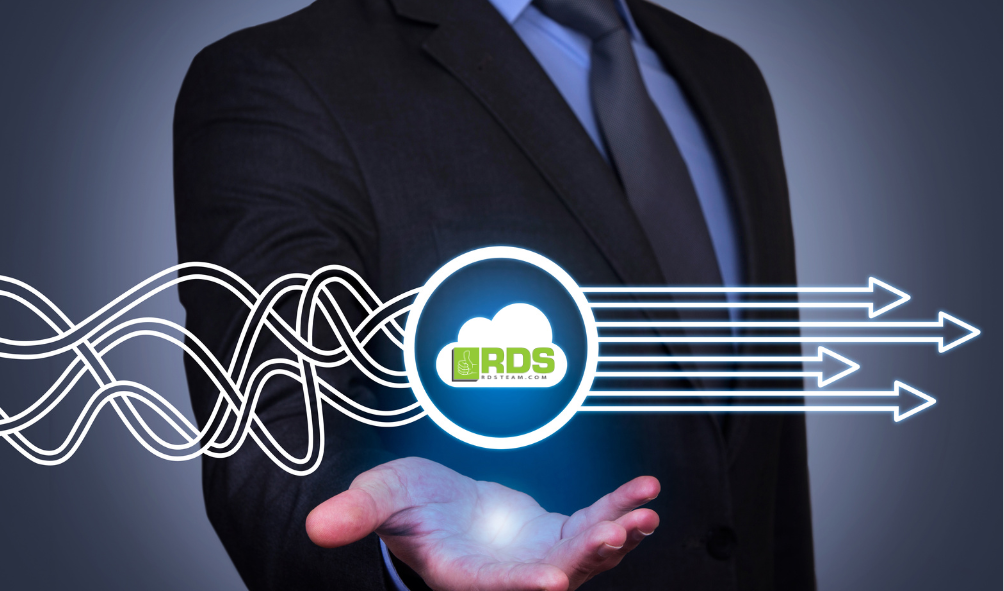Cloud Solutions for Optimizing Business Efficiency
Cloud solutions refer to the delivery of computing resources—such as storage, software, and processing power—over the internet on a pay-as-you-go basis. These solutions enable businesses and individuals to access scalable technology without the need for extensive on-site infrastructure. They combine infrastructure, platforms, and software services to help organizations innovate, reduce costs, and improve operational efficiency.
These services can be tailored to different needs, including public, private, and hybrid cloud models, each offering varying levels of control and security. With providers like Google Cloud, Microsoft Azure, and AWS leading the market, cloud solutions support a wide range of industries by offering flexibility and advanced capabilities such as AI and machine learning.
By adopting cloud solutions, companies can streamline application development, data management, and IT operations while maintaining the ability to scale rapidly. This adaptability makes cloud technology a core driver of modern business transformation and competitiveness.
What Are Cloud Solutions?
Cloud solutions deliver computing resources over the internet, enabling access to storage, applications, and processing power without relying on physical hardware. They differ from traditional IT setups by offering greater scalability, flexibility, and cost-efficiency. Key aspects include how these services are defined, their comparison to conventional systems, and the primary features that characterize cloud-based offerings.
Definition of Cloud Solutions
Cloud solutions encompass services and resources provided remotely through the internet. These often include servers, databases, software applications, and storage. Instead of managing physical equipment on-site, organizations access these resources on demand, usually through subscription or pay-as-you-go models.
Providers such as Amazon Web Services, Microsoft Azure, and Google Cloud Platform deliver these resources with varying levels of control and customization. Cloud solutions cover three main service models: Infrastructure as a Service (IaaS), Platform as a Service (PaaS), and Software as a Service (SaaS).
Cloud Solutions Versus Traditional IT
Traditional IT relies on locally owned hardware and software, requiring significant upfront investment and ongoing maintenance. Cloud solutions eliminate much of this by outsourcing infrastructure to remote providers who manage hardware, updates, and security.
This shift allows businesses to scale resources quickly without physical constraints. Additionally, cloud services reduce the need for dedicated IT staff and lower operational costs. Unlike traditional systems, cloud solutions support remote work and global collaboration more easily due to their internet-based nature.
| Aspect | Traditional IT | Cloud Solutions |
| Infrastructure | On-premises hardware | Remote, internet-based hardware |
| Cost | High upfront and maintenance costs | Pay-as-you-go, operational expense |
| Scalability | Limited, slower to adjust | Rapid, elastic scaling |
| Accessibility | Local or VPN | Anywhere with internet access |
Key Features of Cloud-Based Services
Cloud-based services provide several defining features. On-demand self-service lets users instantly access resources without human interaction from providers. Broad network access ensures services are reachable across multiple devices and locations.
Resource pooling allows providers to serve multiple customers using shared physical and virtual resources dynamically assigned based on demand. Rapid elasticity means resources can be scaled up or down automatically or with minimal effort.
Billing is typically measured service, where usage is tracked, and customers pay based on actual consumption. Security and compliance vary by provider but often include advanced tools to protect data and maintain industry standards.
These features collectively enhance operational efficiency and business agility.
Types of Cloud Deployment Models
Cloud deployment models define where infrastructure resides, who controls it, and how resources are accessed. Each model offers different levels of control, security, and cost, catering to various organizational needs and compliance requirements.
Public Cloud
A public cloud provides access to computing resources hosted by external providers such as AWS, Microsoft Azure, or Google Cloud. These resources are shared among multiple users, optimizing cost through economies of scale.
Businesses using public clouds benefit from high scalability and reduced maintenance since providers manage hardware and software. However, security and compliance depend on the provider’s measures, which may not suit highly sensitive data.
Public clouds are ideal for applications with fluctuating workloads and organizations seeking rapid deployment without the need for physical infrastructure investment.
Private Cloud
Private clouds allocate computing resources exclusively for one organization. This infrastructure can be hosted on-premises or by a third party, but remains isolated from other users.
This model offers enhanced control, security, and compliance, suitable for businesses with strict regulatory requirements or sensitive data. The organization manages or oversees the environment, enabling customization to specific operational needs.
While private clouds typically cost more than public clouds, they provide increased privacy and can integrate with legacy systems more easily.
Hybrid Cloud
Hybrid clouds combine private and public cloud environments, allowing data and applications to move between both. This model provides flexibility, letting businesses keep sensitive operations on private clouds while utilizing public clouds for less critical tasks.
It supports workload balancing, cost efficiency, and disaster recovery. Organizations can scale using public clouds without sacrificing security for critical assets.
A hybrid cloud setup requires robust integration tools and management to ensure smooth operation and data consistency across environments.
Core Cloud Service Models
Cloud service models offer varying levels of control, flexibility, and management responsibility. They range from fundamental infrastructure resources to fully managed software applications, allowing organizations to adopt cloud computing according to their technical needs and business goals.
Infrastructure as a Service (IaaS)
IaaS provides virtualized computing resources over the internet. It delivers essential infrastructure components like servers, storage, and networking on a pay-as-you-go basis. Users control operating systems, applications, and data while the provider manages the physical hardware.
This model is best for organizations needing scalable infrastructure without investing in physical equipment. It supports flexible resource allocation, rapid provisioning, and cost savings through reduced hardware maintenance.
Typical use cases include hosting websites, running development and testing environments, and disaster recovery solutions. Users benefit from high availability and on-demand scalability with retained control over software stacks.
Platform as a Service (PaaS)
PaaS offers a cloud environment with hardware and software tools integrated for application development. It abstracts infrastructure management, providing developers with ready-to-use platforms including databases, development frameworks, and runtime environments.
It suits companies focusing on software development without managing operating systems or networking. PaaS accelerates development cycles and improves collaboration by providing standardized components and tools.
Developers can deploy, test, and maintain applications in a consistent environment. It supports scalability and integration while offloading infrastructure maintenance to the provider.
Software as a Service (SaaS)
SaaS delivers fully managed software applications accessible via web browsers. The provider hosts, maintains, and updates the software, removing the need for local installation or management.
This model fits users requiring ready-to-use solutions such as email, customer relationship management (CRM), and enterprise resource planning (ERP) without hardware concerns.
SaaS ensures immediate access, regular updates, and seamless scalability. Customers benefit from predictable costs, reduced IT workload, and integration with other cloud services through APIs or connectors.
Benefits of Implementing Cloud Solutions
Cloud solutions offer organizations practical advantages that affect both operational costs and resource management. They also support uninterrupted operations and can scale according to evolving business demands. These factors contribute significantly to improved efficiency and resilience.
Cost Efficiency
Implementing cloud solutions reduces upfront investment in physical hardware and infrastructure. Organizations can shift to a pay-as-you-go pricing model, paying only for the resources they use.
This model leads to lower operational expenses by eliminating costs related to maintenance, upgrades, and energy consumption. Additionally, cloud providers benefit from economies of scale, allowing businesses to access advanced technology at reduced variable costs.
By minimizing capital expenditures and converting them into manageable operational expenses, companies improve their financial flexibility without compromising service quality.
Scalability and Flexibility
Cloud environments allow for rapid scaling of resources based on demand. Organizations can increase or decrease computing power, storage, and bandwidth without delay or hardware limitations.
This flexibility supports business growth, seasonal fluctuations, and unexpected traffic spikes. It also enables faster deployment of new applications and services, adapting quickly to changing market conditions.
Furthermore, cloud platforms support diverse workloads and hybrid architectures, giving businesses the ability to tailor IT solutions to their specific needs efficiently.
Business Continuity
Cloud solutions enhance business continuity through reliable data backup and disaster recovery capabilities. Data stored in the cloud is replicated across multiple locations, reducing the risk of data loss from hardware failure or natural disasters.
Automated backups and quick recovery options ensure minimal downtime and fast restoration of services. This approach supports compliance requirements and protects critical business information.
By leveraging the cloud’s infrastructure, organizations can maintain operations even during disruptions, protecting their reputation and customer trust.
Key Considerations for Cloud Adoption
Effective cloud adoption requires careful attention to security, regulatory requirements, and system efficiency. These factors ensure that organizations protect their data, comply with relevant standards, and maintain optimal application performance.
Data Security and Privacy
Data protection is a primary concern when moving to the cloud. Organizations must implement robust encryption mechanisms both in transit and at rest. Access control and identity management are critical to limit data exposure and prevent unauthorized use.
Cloud providers often offer shared responsibility models, delineating security duties. Companies must understand their role in securing sensitive information. Regular audits and monitoring tools can help detect vulnerabilities and potential breaches quickly.
Data privacy laws vary by region, so organizations should assess their cloud provider’s compliance standards and data residency options. Protecting personally identifiable information (PII) and intellectual property must be prioritized in any cloud adoption strategy.
Compliance and Legal Factors
Adhering to industry-specific regulations such as GDPR, HIPAA, or PCI-DSS is mandatory for many organizations. Cloud adoption plans must incorporate these compliance needs from the outset to avoid legal penalties.
Organizations should conduct thorough risk assessments and ensure contractual agreements with cloud providers include clear terms for compliance management. Continuous monitoring and reporting capabilities should be established to demonstrate adherence.
Different jurisdictions may impose data sovereignty rules that restrict where data can be stored or transferred. A hybrid or multi-cloud approach can help meet these legal constraints by segmenting workloads accordingly.
Performance Optimization
Migrating to the cloud presents challenges in maintaining and improving application performance. Effective cloud adoption strategies involve assessing workload requirements to choose the right service models and resource allocations.
Latency, uptime, and scalability are key performance metrics. Organizations should leverage monitoring tools to gain real-time insights and apply auto-scaling features to handle fluctuating demand without service degradation.
Optimizing cost while maximizing performance is achieved by selecting appropriate compute, storage, and network configurations. Regular performance reviews help identify bottlenecks and guide necessary adjustments to the cloud environment.
Cloud Migration Strategies
Successful cloud migration requires a clear understanding of the current IT environment, targeted goals, and a structured approach. It involves evaluating workloads, selecting appropriate migration methods, executing the transfer, and ensuring ongoing management.
Assessment and Planning
This phase focuses on analyzing existing applications, data, and infrastructure. Organizations must identify which workloads to migrate, considering factors like complexity, dependencies, and business impact.
Selecting the right cloud migration strategy—such as rehosting, replatforming, or refactoring—depends on technical requirements and cost objectives. Risks, compliance, and security must be assessed early to prevent issues during migration.
Creating a detailed migration plan includes timelines, resource allocation, and selecting tools to track progress. This foundational step ensures resources are aligned and sets expectations throughout the process.
Migration Process Steps
The migration process typically follows a sequence: preparation, data transfer, application migration, and validation. Initial preparation involves setting up the cloud environment with necessary configurations and security controls.
Data transfer methods vary from online replication to physical transport, chosen based on data volume and downtime tolerance. Applications are then moved using the selected strategy, which can range from simple lift-and-shift to extensive re-architecting.
Testing after migration confirms performance, functionality, and security. Any issues uncovered require prompt remediation to minimize disruption.
Post-Migration Management
Ongoing management is critical to optimizing cloud resources and maintaining operational stability. Teams monitor performance, cost, and security continuously to ensure the environment meets business needs.
This phase includes refining configurations, scaling resources dynamically, and applying patches or updates. It also involves enforcing governance policies to prevent sprawl and ensure compliance over time.
Regular audits and performance reviews help identify opportunities for improvement and validate that migration benefits are being realized.
Emerging Trends in Cloud Solutions
Cloud solutions are evolving rapidly to meet increasing demands for speed, intelligence, and flexibility. Innovations focus on distributing computing power closer to users, enhancing automation through data-driven insights, and optimizing application development for scalability and resilience.
Edge Computing Integration
Edge computing shifts data processing from centralized data centers closer to the source of data generation. This reduces latency and improves response times, which is critical for applications like IoT devices, real-time analytics, and autonomous systems.
By processing data locally, edge computing also lowers bandwidth usage and enhances data privacy. Organizations can handle time-sensitive tasks more efficiently while maintaining a connection to the broader cloud for scalable storage and advanced processing.
As cloud providers expand edge services, businesses gain the ability to deploy hybrid architectures, combining centralized and decentralized computing. This supports faster innovation in sectors such as manufacturing, healthcare, and smart cities.
Artificial Intelligence in the Cloud
AI integration in cloud platforms enables powerful data analysis, automation, and decision-making capabilities. Cloud-based AI services provide scalable resources to train machine learning models without requiring extensive on-premises infrastructure.
Enterprises benefit from pre-built AI tools for natural language processing, computer vision, and predictive analytics, which accelerate development cycles. This democratizes AI by making it accessible even to companies lacking specialized expertise or large data centers.
Furthermore, AI-driven cloud management tools optimize resource allocation, enhance security through anomaly detection, and improve system reliability. This combination of AI and cloud supports complex use cases in customer service, fraud detection, and supply chain optimization.
Cloud-Native Development
Cloud-native development focuses on building applications specifically for cloud environments using microservices, containers, and orchestration tools like Kubernetes. This approach improves application scalability, availability, and portability.
Developers can update and deploy individual components independently, enabling faster innovation and minimizing downtime. Cloud-native apps also integrate well with continuous integration and continuous delivery (CI/CD) pipelines, allowing automated testing and deployment.
This methodology reduces vendor lock-in by making applications compatible across multiple cloud platforms and hybrid infrastructures. As a result, businesses achieve greater flexibility and cost-efficiency while accelerating time-to-market for new features.
Optimize your business efficiency with reliable cloud solutions and trusted cybersecurity software. Get in touch with RDS, one of the leading IT solutions companies in Miami, offering efficient business security systems for all types of businesses. Call (888) 242-4242 or send us an email for more information today.

















